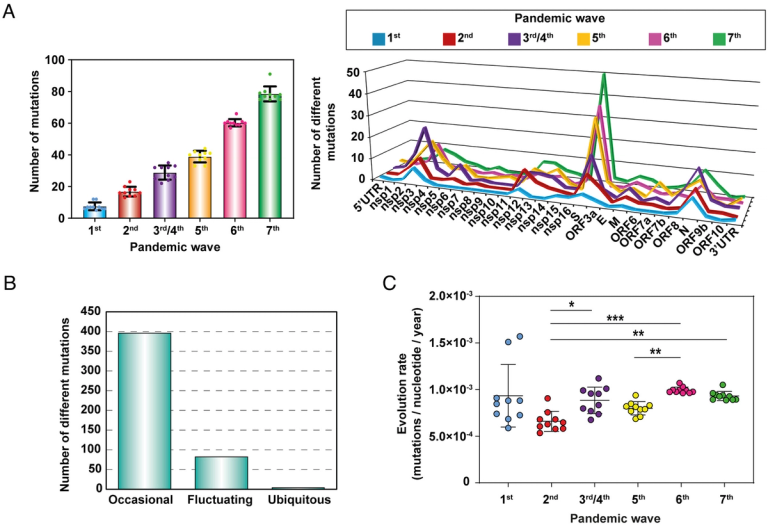ABSTRACT
RNA virus populations consist of complex and dynamic mutant spectra in which most individual genomes differ in one or more positions from the other genomes of the same population. This behavior, known as quasispecies dynamics, applies to SARS-CoV-2 which exhibits intrahost genetic and functional heterogeneity while evolving at a high rate in the human population. In the present study, we describe a remarkable reduction in mutant spectrum complexity (intrahost viral genome heterogeneity) in SARS-CoV-2 isolates of late relative to early COVID-19 waves, as they reached Madrid (Spain) from 2020 until 2022. In contrast, the consensus (average) sequence of the corresponding isolates displayed a continuing divergence from the initial Wuhan-Hu-1 virus as the pandemic advanced. The mutant spectrum complexity developed upon replication in Vero E6 cells of the isolates from the first and sixth COVID-19 waves, as well as of biological clones retrieved from them, was similar. Therefore, the mutant spectrum complexity reduction observed in vivo was not due to an increased accuracy of the viral replicative machinery, but rather to other factors related to viral epidemiology or pathogenesis. Such possible factors and their implications for viral trait modifications in the course of a viral pandemic are discussed. The results establish that mutant spectrum complexity of genetically variable viruses can be an epidemiologically evolvable trait.

